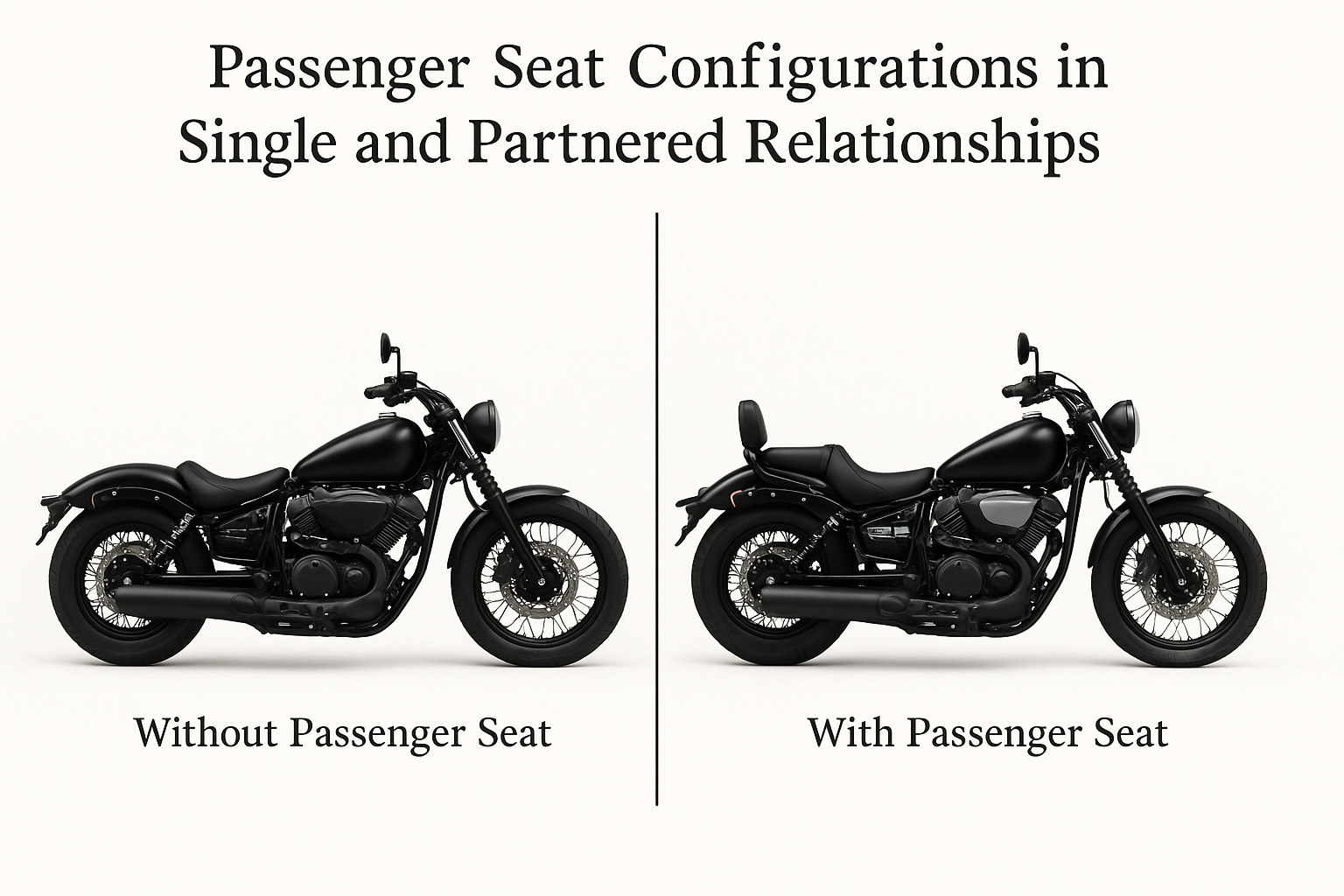
Abstract:
In this groundbreaking foray into the trivial made monumental, this paper explores the pressing existential divide between two categories of motorcyclists: those who heroically remove the passenger seat when in a relationship to assert their lone-wolf purity, and those who selflessly add a seat when single in a blatant bid for attention. Although motorcycle modifications have been thoroughly fetishized in prior scholarship, no study has dared to examine the metaphysical ramifications of a piece of vinyl-covered foam. This paper corrects that grievous academic oversight.
1. Introduction
While the uninitiated might erroneously believe motorcycles are for transportation or fun, a true scholar recognizes that every minor bolt and seat adjustment is a rich, throbbing canvas of existential self-expression. Rear seat configuration, that most overlooked of mechanical minutiae, is here revealed to be nothing less than a flashing neon sign of one’s spiritual and romantic status.
2. Methodology
Employing a sophisticated methodology that involved passive-aggressively judging people at biker rallies, stalking Instagram, and listening very intently at gas stations, this study assembles a corpus of largely unverified but emotionally resonant observations. No IRB approval was sought because, frankly, the IRB would have laughed us out of the building.
3. The Ascetic Individualists: Seat Removal Upon Pair-Bonding
This highly evolved group of riders believes that once they have secured a significant other, the back seat becomes a symbol of unnecessary burden—much like texting back promptly or attending brunch. By removing the passenger seat, they issue a stirring declaration: “I have found love, and now I must be free of it immediately, at least while riding.”
3.1. Psychological Profile
Possessing a deep distrust of codependence and a loathing of shared experiences, these riders resonate with the philosophical gravity of Sartre but prefer their lectures delivered via TikTok. Their choice proclaims to the world, “I love you… just not enough to ruin my cornering performance.”
4. The Opportunistic Hedonists: Seat Addition During Singleness
Conversely, the opportunistic hedonists view the passenger seat as a critical piece of hunting equipment. When single, they install the passenger seat with the same solemnity as a knight donning armor—except the goal is not battle but sweet, sweet validation. If the rear seat had a neon sign saying “Available for Immediate Poor Decisions,” they would install that too.
4.1. Psychological Profile
Typically exhibiting high openness to experience and a tragically desperate optimism, these riders weaponize the motorcycle’s passenger seat as a mobile dating app. They understand that nothing says “I’m emotionally available” quite like a wobbly aftermarket seat loosely bolted onto a midlife crisis.
5. Discussion
What is clearly at stake here is not merely butt comfort but a full-blown dialectical struggle between authentic existential freedom and thirsty social manipulation. The Ascetic Individualist seeks nirvana through solitude at 70 mph; the Opportunistic Hedonist seeks a Tinder date via mechanical conspicuous consumption. Both, however, are united in the solemn understanding that their seat choices are life-altering decisions worthy of peer-reviewed analysis.
6. Conclusion
In summation, the otherwise boring act of adding or removing a rear seat on a motorcycle is, in fact, an ontological crucible through which riders forge their identities. Future studies should escalate the absurdity by incorporating biometric seat-warming sensors, Tinder swipe metrics correlated to seat presence, and perhaps a full Jungian shadow analysis of saddlebag contents.
7. References
(References omitted because no self-respecting academic would cite actual sources on such a topic—and if they did, I refuse to dignify them.)
—
Footnotes
1. Yes, I technically made up all psychological profiles, but if you think about it hard enough, I’m probably right.
2. IRB approval was not sought because explaining this study would have caused actual physical pain to the board.
3. Gas stations are fertile grounds for anthropological research, assuming you’re okay with getting strange looks.
4. No passengers were harmed in the making of this paper, unless you count bruised egos.
5. I attempted to cross-reference my findings with existing literature but was promptly distracted by a cat video on YouTube.
6. If anyone wants to replicate this study, I recommend bringing sunglasses, a clipboard, and an air of unbearable pretension.

Comments are closed.